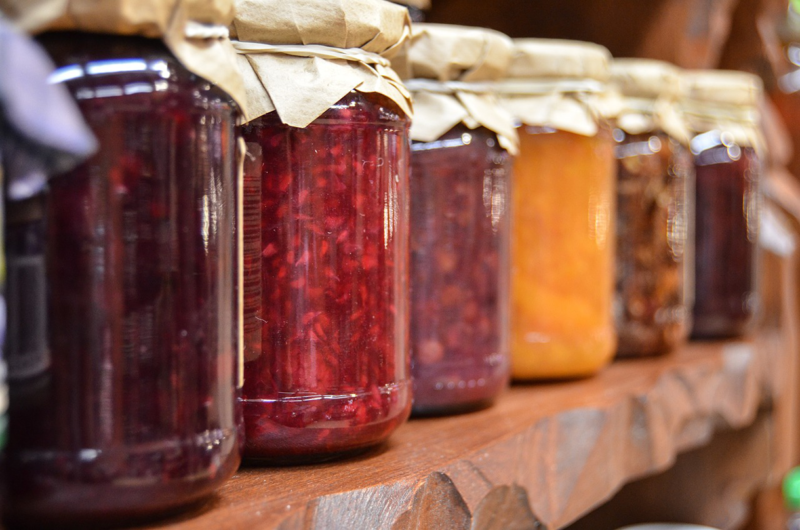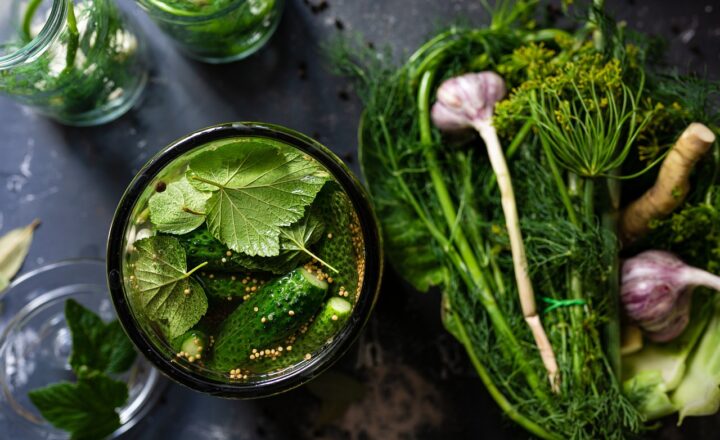The History of Food Preservation: From Salt Curing to Modern Freezing
October 24, 2024

Food preservation has been an essential part of human survival for thousands of years. Before the advent of modern technology, our ancestors had to develop methods to keep food safe for long periods, especially during seasons when fresh food was scarce. From ancient techniques like drying and salting to modern innovations like freezing and canning, the history of food preservation is a fascinating journey of ingenuity and adaptation.
In this article, we’ll explore the evolution of food preservation methods, the science behind these techniques, and how they have shaped human history.
1. The Earliest Methods of Food Preservation
Before refrigeration and freezing, ancient civilizations had to rely on natural preservation methods to keep food edible for extended periods. Many of these early techniques are still used today, though often in combination with modern technologies.
Key ancient food preservation methods:
- Drying: One of the oldest methods of food preservation, drying removes moisture from food, making it difficult for bacteria and mold to grow. Early humans dried meat, fish, fruits, and vegetables by exposing them to the sun or wind.
- Salting: Salt was highly valued in ancient societies because of its ability to preserve food. Salting draws moisture out of food through osmosis, inhibiting bacterial growth. Salt curing was commonly used for meats and fish.
- Fermentation: Fermentation is a natural process where microorganisms, such as bacteria or yeast, convert sugars into alcohol or acids. This process not only preserves food but also enhances its flavor. Examples include fermented dairy (like yogurt), vegetables (such as sauerkraut), and beverages (like beer and wine).
- Smoking: Smoking was used as both a cooking and preservation method. By exposing food to smoke from burning wood, early humans could prolong its shelf life while adding flavor. Smoking was commonly used for meat and fish.
These methods allowed ancient civilizations to store surplus food, ensuring survival during times of scarcity.
2. Salt Curing: The Role of Salt in Preserving Food
Salt played a crucial role in early food preservation. Its ability to draw moisture out of food and create an inhospitable environment for bacteria made it an indispensable preservation tool. Salt curing became especially popular in regions where access to fresh food was seasonal or limited.
The science behind salt curing:
- Osmosis: Salt draws water out of food cells and bacteria through osmosis, preventing microbial growth.
- Dehydration: As moisture is removed, the food becomes less hospitable to bacteria, extending its shelf life.
- Flavors: Salt not only preserves but also enhances the flavor of food, particularly meats and fish.
Salted fish, such as cod and herring, became staple foods in ancient and medieval societies, especially in Europe. Salt was so valuable that it was sometimes used as currency, and control over salt resources was often a source of conflict.
3. Ice and Cold Storage: Early Refrigeration
Long before the invention of electric refrigeration, humans understood the value of cold temperatures in preserving food. Ice and snow were used to keep food fresh, and ice harvesting became an important industry in colder regions.
Early cold storage techniques:
- Ice Houses: In ancient China, Persia, and Greece, ice houses were built to store ice and snow collected during the winter. These insulated structures could keep food cool for months.
- Root Cellars: Root cellars were underground storage rooms that took advantage of the Earth’s naturally cool temperatures. They were used to store vegetables, fruits, and other perishables in temperate climates.
- Ice Harvesting: In the 19th century, ice harvesting became a significant industry. Large blocks of ice were cut from frozen lakes and rivers and transported to cities for use in iceboxes, the precursor to modern refrigerators.
The ability to store food in cold environments was a major step forward in food preservation, leading to the development of more advanced refrigeration technologies.
4. Canning: A Revolutionary Breakthrough
The invention of canning in the early 19th century revolutionized food preservation. French chef Nicolas Appert is credited with developing the process, which involved sealing food in glass jars and heating them to kill bacteria. Canning allowed for the long-term storage of food without the need for refrigeration.
How canning works:
- Heating: The food is sealed in an airtight container and heated to a temperature that kills harmful bacteria and microorganisms.
- Airtight Sealing: The container is sealed to prevent air and new bacteria from entering, ensuring that the food remains preserved for long periods.
Canning became particularly important during the Industrial Revolution, providing a reliable method for preserving food for soldiers, sailors, and urban populations. It also played a critical role during World War I and World War II, when the need for non-perishable food was at an all-time high.
5. Freezing: The Rise of Modern Food Preservation
The advent of modern freezing technology marked another major advancement in food preservation. While people had long used ice and cold temperatures to preserve food, the invention of mechanical refrigeration in the 19th century and the development of commercial freezers in the 20th century made freezing a widespread method of food storage.
The science of freezing:
- Slowing Bacterial Growth: Freezing food slows down the activity of bacteria and enzymes, preventing spoilage.
- Preserving Nutrients: Freezing helps preserve the nutritional content of food, making it one of the most effective methods for long-term storage.
- Flash Freezing: Developed by Clarence Birdseye in the 1920s, flash freezing involves freezing food at extremely low temperatures very quickly. This method helps maintain the texture, flavor, and nutritional value of the food.
Today, freezing is one of the most common methods of food preservation, used by both households and the food industry.
6. Vacuum Sealing and Dehydration
Vacuum sealing and dehydration are modern techniques that have become popular for preserving food by removing moisture and air, both of which contribute to spoilage.
Vacuum Sealing:
- By removing air from the packaging, vacuum sealing prevents the growth of aerobic bacteria and molds.
- It also prevents freezer burn, making it ideal for freezing meat, vegetables, and other perishables.
Dehydration:
- Modern dehydrators remove moisture from food more efficiently than traditional drying methods, making it possible to preserve fruits, vegetables, and even meats for long periods.
- Dehydrated foods are lightweight and have a long shelf life, making them popular for camping, hiking, and emergency preparedness.
Both of these methods are widely used in today’s food industry and in homes for long-term food storage.
7. The Future of Food Preservation: New Innovations
As technology continues to advance, new methods of food preservation are emerging that could transform how we store and consume food. Innovations such as high-pressure processing, irradiation, and biotechnology are being developed to extend shelf life, reduce waste, and improve food safety.
Emerging food preservation technologies:
- High-Pressure Processing (HPP): HPP uses extreme pressure to kill bacteria without the need for heat, preserving the taste, texture, and nutritional value of food.
- Food Irradiation: Irradiation uses low doses of radiation to kill bacteria, parasites, and insects in food, while also extending shelf life. It is commonly used for spices, dried fruits, and meats.
- Edible Coatings: Edible coatings made from natural substances like proteins, lipids, and carbohydrates can be applied to fruits and vegetables to extend their shelf life by reducing moisture loss and spoilage.
- Biotechnology: Advances in biotechnology, such as genetically modified organisms (GMOs), are being used to create crops that are more resistant to spoilage and pests, reducing the need for chemical preservatives.
The future of food preservation promises to bring even more sustainable, efficient, and safe ways to keep our food fresh and nutritious.
Conclusion: The Evolution of Food Preservation
From ancient methods like salting and drying to modern techniques like freezing and high-pressure processing, the history of food preservation reflects humanity’s ingenuity in overcoming the challenges of food storage and safety. Each new innovation has not only made it easier to keep food fresh but also contributed to the growth of civilizations by enabling long-distance trade, reducing food waste, and improving food security.
As we look to the future, the continued development of new preservation technologies will be essential in addressing global challenges such as food waste, sustainability, and access to nutritious food. By understanding the history of food preservation, we can better appreciate the technologies that keep our food safe and explore new ways to improve food security for generations to come.







